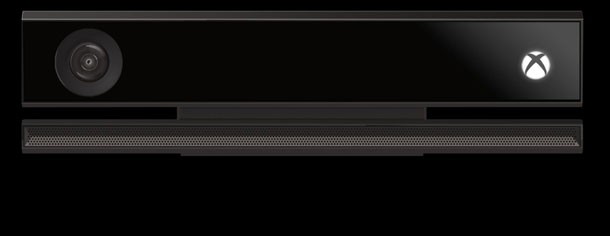Our extra-large special edition is here. Subscribe today and receive the 25% longer issue at no extra cost!
Microsoft Going All-In With Kinect

Microsoft revealed the next Xbox at an event this morning, and Kinect is here to stay. This time, it’s not being seen as just a peripheral. It’s a fundamental tool in the company’s battle for your living room.
When you open up your Xbox One for the first time, the Kinect is included alongside the console, controller, and cords. The hardware has been rebuilt from scratch, using a completely different technology. “If you think about the way that the original Kinect worked, it used this technology called structured light, which is where we send out a pattern of light onto the world and then we do a lot of complex math to measure the deformations of light in that space and understand what’s going on,” says Mark Whitten, Microsoft’s chief product officer. “It’s really cool, and it’s the first time you’ve really seen a consumerized depth in the world when we brought that out with Kinect, but it’s not as precise as we want. Our new tech stack is called time of flight. Time of flight measures the amount of time it takes a photon to hit you and get back to the sensor. Now, light travels really, really fast, so that doesn’t take much time at all. The ability to do that, the rocket science-level tech to be able to do that is what gives us unprecedented precision and unprecedented ability to understand your world and create these cool control experiences.”
The new Kinect features a better field of view, which means that it can be used in smaller rooms and also better support games with players of varying heights. Additionally, the system uses IR illumination tech, so the system reads the action accurately whether players are in a darkened room or next to a window on a sunny day.
Players are detected and rendered with greater in-game precision, too. The system can detect fingers, smiles, blinking, and joint rotation. For example, players could fire an in-game gun by pointing two fingers at the sensor and firing by pressing their thumb to their index finger. In a technical demo featuring a first-person shooter, we saw how Kinect worked in conjunction with a controller. The player leaned from cover to take a shot at a cluster of enemies. Once they were alerted, she pulled up a shield by holding her arm up, deflecting shots. She followed up by calling in a birdlike companion using her voice. While it seemed like a series of rudimentary concepts, the fact that Kinect 2.0 is packaged in the box makes us think it’s more likely that developers will incorporate these kinds of motions into core experiences.
Microsoft says that the new Kinect can even detect player emotion and engagement. We saw the system flag a woman as being disengaged by turning and interacting with her phone. Whether this is merely a proof-of-concept display or something that developers can incorporate into games remains to be seen.
Seeing the two iterations of Kinect side by side, it’s hard not to appreciate the advances. The new sensor clearly outperforms the original in every imaginable way, and it looks as though it could come closer to delivering what was promised with the original Kinect.
The unit boasts four microphones, which is critically important for the unit’s interface. Microsoft says the system needs to be able to filter through audio noise such as people talking and ambient sounds in order to detect voice prompts. The new microphone array allows for that kind of clarity, the company says.
Visit our Xbox Reveal Headquarters for complete coverage of today's news.

Get the Game Informer Print Edition!
Explore your favorite games in premium print format, delivered to your door.
- 10 issues per year
- Only $4.80 per issue
- Full digital magazine archive access
- Since 1991






